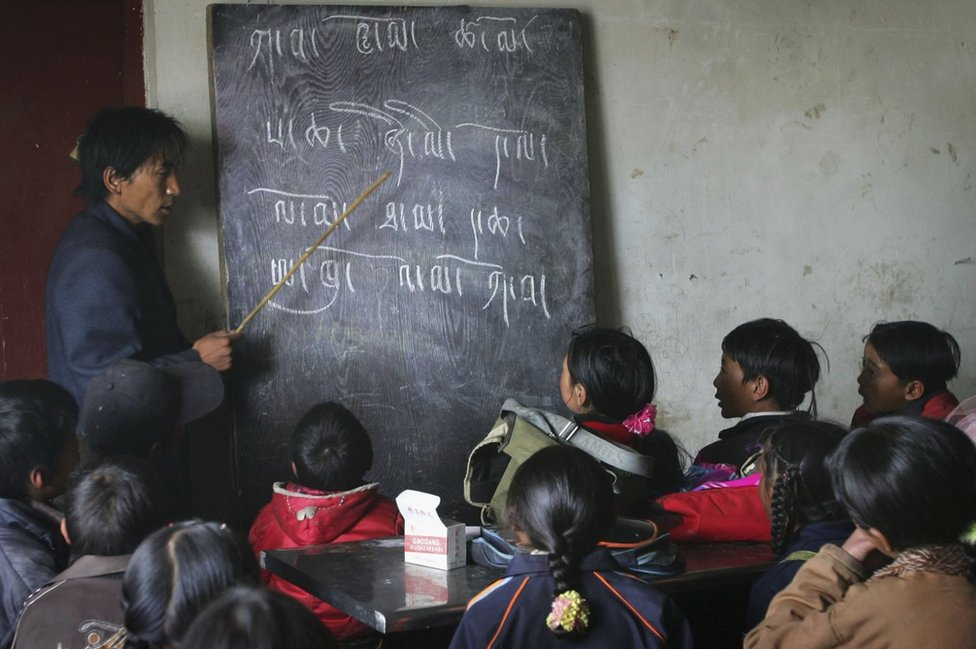
China pressures Tibetan boarding schools
China’s Increasing Pressure on Tibetan Boarding Schools A Complex Socio Political Challenge
In recent years, Chinese authorities have intensified their control and influence over Tibetan boarding schools, raising serious concerns about cultural preservation, educational freedom, and human rights within the Tibetan Autonomous Region and neighboring Tibetan inhabited areas. These boarding schools, often positioned as vital institutions for the education and care of Tibetan children from remote or rural communities, have become a focal point for Beijing’s broader efforts to assimilate Tibetans into the mainstream Chinese identity. The pressure exerted on these schools manifests in multiple forms, ranging from curriculum reforms and language policies to heightened surveillance and restrictions on religious and cultural expression.
At the heart of this issue lies the Chinese government’s longstanding goal to maintain stability and consolidate its authority over Tibet, a region with a distinct cultural and religious heritage that many Tibetans view as integral to their identity. Boarding schools, which traditionally provided an environment where Tibetan language, customs, and Buddhist values were transmitted to younger generations, have increasingly come under state directives aimed at emphasizing Mandarin Chinese and patriotic education. This shift often sidelines or outright suppresses Tibetan language instruction, thereby threatening the survival of the language and the cultural knowledge embedded within it.
The curriculum imposed by Beijing focuses heavily on Chinese national history, socialist values, and loyalty to the Communist Party, frequently at the expense of Tibetan cultural studies. Educational materials are standardized across the country, and Tibetan history and religious content are either omitted or reframed through a political lens that downplays Tibetan distinctiveness. Such an approach not only diminishes the relevance of Tibetan heritage in students’ education but also creates a sense of alienation among young Tibetans who may struggle to reconcile their familial and community identities with the official narratives taught at school.
Beyond curriculum changes, Tibetan boarding schools face stringent regulations on daily practices that shape students’ cultural and religious life. For example, religious activities, including Buddhist prayers and ceremonies, are often restricted or monitored, limiting students’ access to spiritual guidance and cultural rituals that are central to Tibetan life. This curtailment reflects broader governmental policies aimed at controlling religious expression throughout China, but it takes on heightened significance in Tibet, where religion is deeply interwoven with social identity and communal cohesion.
The pressure extends to the physical environment and management of the schools as well. Reports indicate that surveillance measures, such as the installation of cameras and restrictions on visitors, have increased, creating an atmosphere of constant monitoring. Teachers and staff may be required to undergo political training to ensure alignment with government ideology, and the presence of party cadres within schools is reportedly growing. These measures reinforce a climate where deviation from state approved norms can lead to punishment or re education efforts, further stifling any grassroots efforts to preserve Tibetan traditions within the education system.
This tightening grip on Tibetan boarding schools has profound implications for the students themselves and their communities. Education plays a critical role in shaping identity and future opportunities, and the current environment risks producing a generation of Tibetans who are disconnected from their cultural roots. While proponents of the government’s policies argue that promoting Mandarin and integrating Tibetans into the national framework enhances social cohesion and economic prospects, critics warn that such policies constitute cultural erasure and undermine the right of Tibetans to maintain their unique heritage.
International human rights organizations have voiced alarm over these developments, highlighting the impact on children’s rights to education in their mother tongue and freedom of religious practice. Calls for greater transparency, dialogue with Tibetan communities, and respect for cultural autonomy have been made repeatedly. However, access for independent observers and international agencies remains severely restricted, making it difficult to assess the full scale and nature of the situation within these schools.
The broader geopolitical context also influences the narrative surrounding Tibetan boarding schools. Tibet remains a sensitive topic in Sino international relations, with China emphasizing sovereignty and territorial integrity while facing criticism from foreign governments and advocacy groups regarding human rights abuses. Education policy in Tibet thus becomes not just a domestic issue but a focal point in global debates about cultural rights, minority protections, and China’s approach to governance in restive regions.
In conclusion, the pressure exerted by Chinese authorities on Tibetan boarding schools represents a complex challenge at the intersection of education, culture, and politics. These schools, once bastions of Tibetan heritage and community, are now arenas for state led efforts at assimilation and ideological control. The consequences for Tibetan children, their families, and the survival of Tibetan identity are profound. As the situation unfolds, it remains imperative for policymakers, educators, and the international community to engage thoughtfully with these dynamics, balancing concerns about security and integration with the urgent need to respect cultural diversity and human rights.











